CSS Solved Environmental Science Past Papers | What is anaerobic degradation? Describe the four key stages in the anaerobic degradation of organic waste.
The following question of Environmental Science is attempted on the same pattern, taught by Sir to his students, scoring the highest marks in compulsory subjects for years. This solved past paper question is uploaded to help aspirants understand how to crack a topic or question, how to write relevantly, what coherence is, and how to include and connect ideas, opinions, and suggestions to score the maximum.

Question Breakdown:
In this question, the examiner asks you to write about anaerobic degradation generally and the key steps involved in the anaerobic degradation of organic waste specifically. This question comprises two parts. First, you have to write about anaerobic degradation and then its key steps. Now, all you have to do is start with a brief introduction to anaerobic degradation, which is the subject matter. Keep in mind, your main focus must be on the steps involved in anaerobic degradation. Add flow charts and mind maps to grab the attention of the examiner. The question is all about explaining scientific terms, so be specific and do not beat around the bush. You can make your representation even more beautiful by drawing chemical reactions involved in four stages. You can also add advantages and disadvantages of the respective procedure. Make punching and eye-catching statements for better explanations. Before starting the question, make a comprehensive outline that covers all the important dimensions you are going to discuss in your answer.
Outline
1- Introduction of “Anaerobic degradation”
2- Key Steps involved in Anaerobic Degradation
3- The process of anaerobic degradation can be divided into four stages
- ✓Hydrolysis
- ✓Acidogenesis
- ✓Acetogenesis
- ✓Methanogenesis
4- Carbon cycle: Significant output of anaerobic degradation
5- Advantages of Anaerobic Degradation
- ✓Waste reduction
- ✓Reduction of greenhouse gas emissions
- ✓Sustainable and cost saving process
6- Disadvantages of Anaerobic Degradation
- ✓Carbon dioxide and methane emission
- ✓Technological limitations & Maintenance requirements
- ✓Complex and slow process
7- Conclusion

Introduction of “Anaerobic degradation”
Anaerobic degradation of organic waste is the breakdown of organic matter in the absence of oxygen. This process is carried out by anaerobic microorganisms, such as bacteria and fungi that can survive in environments with low or no oxygen levels. Instead of using oxygen as the terminal electron acceptor, anaerobic microorganisms use alternative electron acceptors like nitrates, sulfates, and carbon dioxide to perform respiration and degrade the organic matter. During anaerobic degradation, the organic matter is converted into a variety of end products, such as methane (CH4), Carbon dioxide (CO2), hydrogen sulfide (H2S), and biogas as a by-product. It occurs in environments such as landfills, sewage treatment plants, and anaerobic digesters. The biogas generated can be used as a renewable energy source. This process plays a crucial role in the global carbon cycle and is particularly important in waste treatment and bioremediation. The steps involved in anaerobic degradation include hydrolysis, acidogenesis, acetogenesis, and methanogenesis. Each step is performed by different microorganisms and results in the production of specific end products.
Key Steps involved in Anaerobic Degradation:
Anaerobic degradation of organic waste works through a series of complex biochemical reactions. The organic matter is broken down by anaerobic microorganisms, producing biogas, which consists mainly of methane (CH4) and carbon dioxide (CO2), as well as other gases like hydrogen sulfide (H2S). The process of anaerobic degradation can be divided into four stages: hydrolysis, acidogenesis, acetogenesis, and methanogenesis.
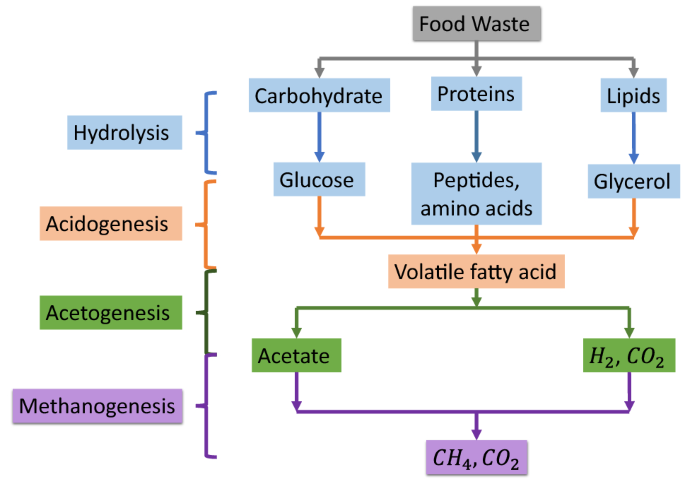
- Hydrolysis
Hydrolysis is the first stage of the anaerobic degradation of organic waste. It involves the breakdown of complex organic matter into simpler compounds through the action of enzymes produced by anaerobic microorganisms. During hydrolysis, complex organic matter such as carbohydrates, proteins, and fats are broken down into simpler sugars (such as glucose), amino acids, and fatty acids. This is done through the action of hydrolytic enzymes, which cleave the chemical bonds of the organic matter, releasing the simpler compounds. Hydrolysis is a crucial step in the anaerobic degradation process because it makes the organic matter accessible to the other microorganisms involved in the process. The simpler compounds produced during hydrolysis are then used as substrates in the subsequent stages of the anaerobic degradation process, including acidogenesis, acetogenesis, and methanogenesis.
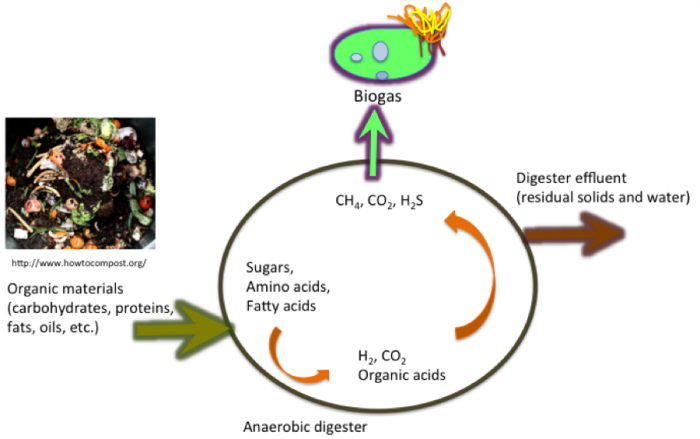
Overall, hydrolysis plays a vital role in the anaerobic degradation of organic waste, as it provides the building blocks for the production of biogas and the eventual treatment of the organic waste.
- Acidogenesis
Acidogenesis is the second stage in the anaerobic degradation of organic waste. It involves the further breakdown of the simpler compounds produced during hydrolysis into volatile fatty acids (VFAs), alcohols, and other compounds. In this stage, bacteria and fungi utilize the simpler compounds produced during hydrolysis as substrates and produce VFAs, alcohols, and other compounds as a result of their metabolic processes. The VFAs produced during acidogenesis are important intermediate products that play a crucial role in the subsequent stages of the anaerobic degradation process. Acidogenesis can be considered the main stage of organic acid production, and the VFAs produced are used as the main source of energy and carbon for the anaerobic microorganisms involved in the degradation process. Overall, acidogenesis is a critical step in the anaerobic degradation of organic waste as it produces the intermediate compounds that are then utilized in the next stage of the process, acetogenesis. It also helps to reduce the pH of the waste, making it easier for the anaerobic microorganisms to access the organic matter and convert it into biogas.
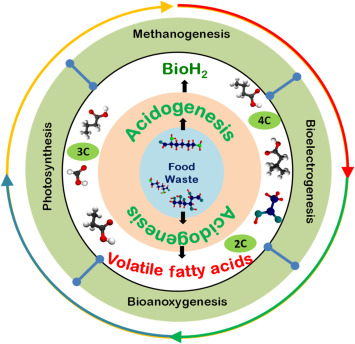
- Acetogenesis
Acetogenesis is the third stage in the anaerobic degradation of organic waste. It involves the conversion of the volatile fatty acids (VFAs) produced during acidogenesis into acetic acid and other compounds. In this stage, specific groups of bacteria, known as acetogenic bacteria, utilize the VFAs produced during acidogenesis as substrates and convert them into acetic acid and other compounds through their metabolic processes. The acetic acid produced during acetogenesis is then utilized in the final stage of the anaerobic degradation process, methanogenesis. Acetogenesis is a critical step in the anaerobic degradation of organic waste, as it provides the intermediate compounds that are then converted into biogas in the final stage of the process. The production of acetic acid also helps to maintain a balance between the production of methane and carbon dioxide during the final stage of methanogenesis.
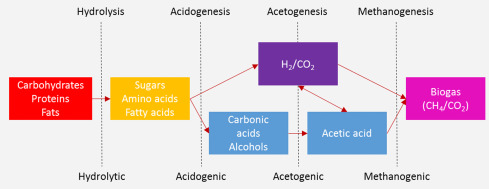
Overall, acetogenesis is an important step in the anaerobic degradation of organic waste, as it provides the compounds necessary for the production of biogas and the eventual treatment of the organic waste.
- Methanogenesis
Methanogenesis is the final stage in the anaerobic degradation of organic waste. It involves the conversion of acetic acid and other compounds into methane (CH4) and carbon dioxide (CO2).In this stage, specific groups of bacteria, known as methanogenic bacteria, utilize the acetic acid and other compounds produced during acetogenesis as substrates and convert them into methane and carbon dioxide through their metabolic processes. The methane produced during methanogenesis is the primary component of biogas, which is a mixture of gases produced during the anaerobic degradation of organic waste. Methanogenesis is a critical step in the anaerobic degradation of organic waste because it provides the main component of biogas, which can be captured and used as a renewable energy source for heating, electricity generation, and transportation. The production of methane also helps to reduce the organic content of the waste and control the production of other undesirable gases, such as hydrogen sulfide.
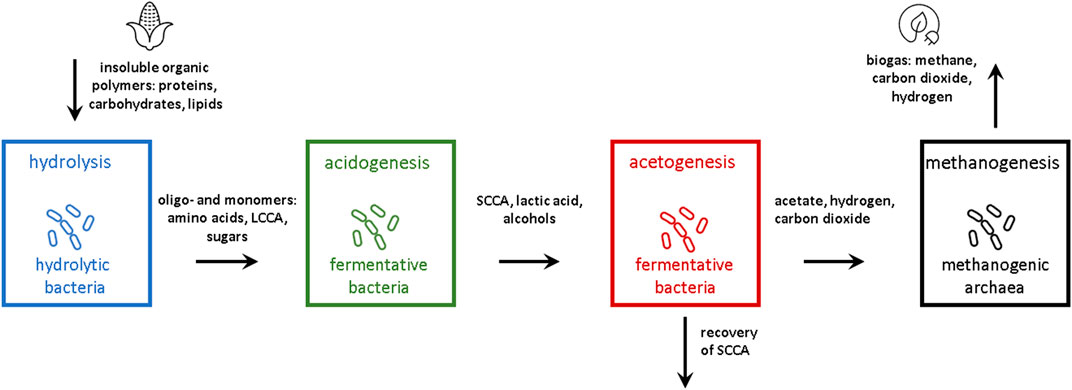
Overall, methanogenesis is an important step in the anaerobic degradation of organic waste, as it provides the primary component of biogas and helps to reduce the organic content of the waste, making it easier to handle and dispose of in a sustainable manner.
Carbon cycle & Significant role of anaerobic degradation
Anaerobic degradation is an important part of the carbon cycle, as it plays a role in the breakdown of dead organic matter and the release of carbon back into the atmosphere. In the absence of oxygen, microorganisms such as bacteria and fungi use alternative processes, like anaerobic respiration, to decompose organic matter. This process produces carbon dioxide and/or methane, which can then be re-absorbed by plants through photosynthesis or released into the atmosphere. This process helps to balance the amount of carbon in the ecosystem and is particularly important in wetland environments, where oxygen levels are low. In these environments, anaerobic degradation can result in the production of methane, which is a potent greenhouse gas and contributes to climate change. However, anaerobic degradation also helps to sequester carbon in the form of organic matter in soils, which can be a valuable carbon sink.
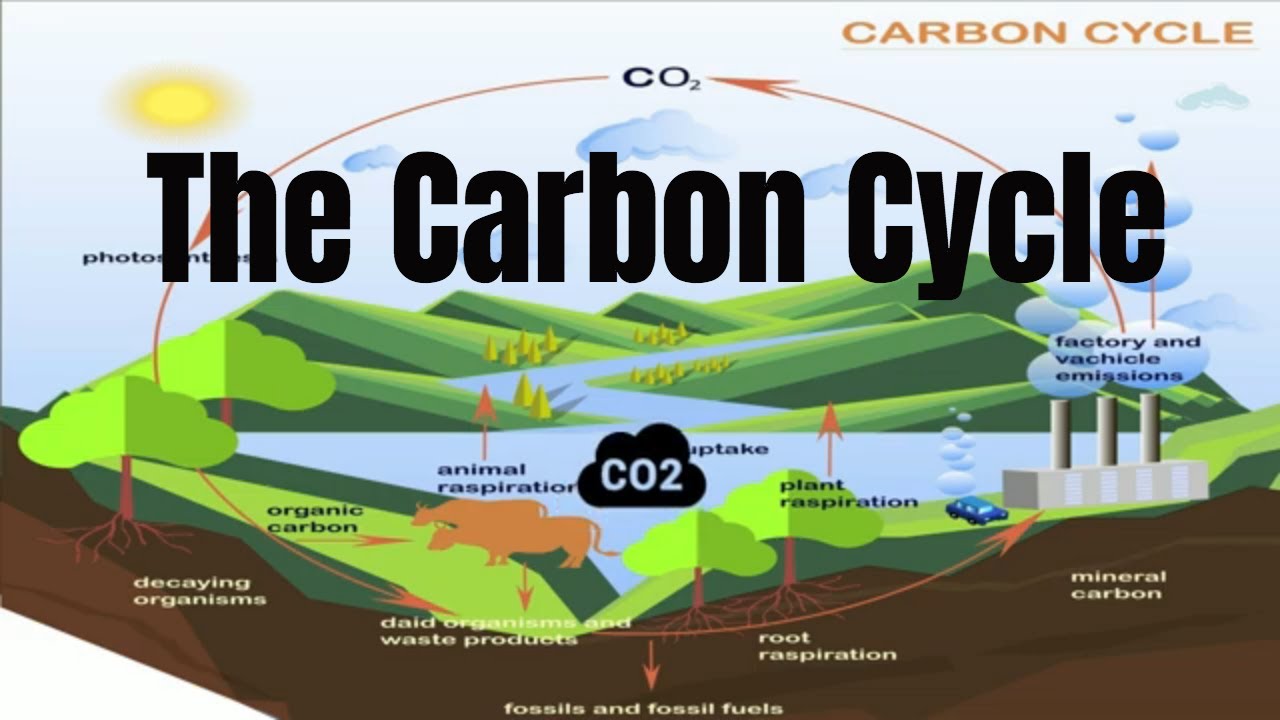
Overall, anaerobic degradation is an important part of the carbon cycle, helping to regulate the balance of carbon in the environment and playing a role in the release of greenhouse gases into the atmosphere.
Advantages of Anaerobic Degradation:
Anaerobic degradation of organic waste has several advantages, including:
- Waste Reduction
Anaerobic degradation of organic waste helps to reduce the volume of waste and its organic content, making it easier to handle and dispose of in a sustainable manner.
- Reduction of greenhouse gas emissions
Anaerobic degradation of organic waste results in the production of biogas, which is a clean and renewable energy source that can replace fossil fuels, reducing greenhouse gas emissions.
- Sustainable and cost-saving process
The generation of biogas through anaerobic degradation can reduce energy costs and dependence on non-renewable sources. Along with it, it is a sustainable process as it recycles organic matter and generates energy while reducing waste and environmental impact.
Overall, anaerobic degradation of organic waste offers several advantages, including energy generation, waste reduction, reduction of greenhouse gas emissions, reduction of odors, improved soil fertility, and improved water quality
Disadvantages of Anaerobic Degradation:
Anaerobic degradation of organic waste has some limitations and challenges, including:
- Carbon dioxide & methane emission:
Although anaerobic degradation generates biogas, which is a renewable energy source, it also releases carbon dioxide into the atmosphere. Methane, a potent greenhouse gas, is produced in large quantities during anaerobic degradation, which can have negative environmental impacts if not properly managed.
- Technological limitations & Maintenance requirements:
The anaerobic degradation process can be influenced by the composition of the organic waste, and the presence of toxic or inhibitory compounds can reduce biogas production. Anaerobic degradation facilities require regular maintenance and monitoring to ensure optimal performance and avoid problems such as clogging, corrosion, and other technical issues.
- Complex and slow process:
Anaerobic degradation can be a slow process and may take longer than aerobic degradation to break down organic matter. The process of anaerobic degradation is complex and requires careful management to maintain optimal conditions for the microorganisms.
Overall, anaerobic degradation of organic waste has some limitations and challenges, including process complexity, high cost, technological limitations, maintenance requirements, and energy consumption. These factors need to be carefully considered when planning and implementing anaerobic degradation facilities.
Conclusion:
In conclusion, anaerobic degradation of organic waste is a process that involves the conversion of organic waste into biogas through the action of microorganisms in an oxygen-free environment. The process is a complex one, involving several key steps, and requires the control of factors like temperature, pH, and nutrient levels. . The process generates biogas, a renewable source of energy, while also reducing waste and controlling pollutants. However, anaerobic degradation requires careful management to maintain optimal conditions for the microorganisms and to minimize negative environmental impacts, such as methane emissions This process has several advantages, including energy generation, waste reduction, reduction of greenhouse gas emissions, reduction of odors, improved soil fertility, and improved water quality. However, it also has some limitations and challenges, such as process complexity, high cost, technological limitations, maintenance requirements, and energy consumption.
CSS Solved Past Papers’ Essays
Looking for the last ten years of CSS and PMS Solved Essays and want to know how Sir Kazim’s students write and score the highest marks in the essays’ papers? Then, click on the CSS Solved Essays to start reading them.
CSS Solved Essays

CSS Solved General Science & Ability Past Papers
Want to read the last ten years’ General Science & Ability Solved Past Papers to learn how to attempt them and to score high? Let’s click on the link below to read them all freely. All past papers have been solved by Miss Iqra Ali & Dr Nishat Baloch, Pakistan’s top CSS GSA coach having the highest score of their students.
General Science & Ability Solved Past Papers
CSS Solved Pakistan Affairs Past Papers
Want to read CSS Pakistan Affairs Solved Past Papers and learn how to attempt them to score high? Let’s click on the link below to read them all freely. All past papers’ questions have been attempted by Sir Kazim’s students, who scored the highest in the subject.
CSS Solved Pakistan Affairs
CSS Solved International Relations’ Past Papers
Have you opted for International Relations in the CSS examination and want to score above 150? Then, click on the CSS Solved International Relations’ Past Papers by Miss Abeera Fatima, the top IR scorer and the best IR coach in Pakistan.
CSS Solved International Relations Past Papers
Articles Might Interest You!
The following are some of the most important articles for CSS and PMS aspirants. Click on any to start reading.












